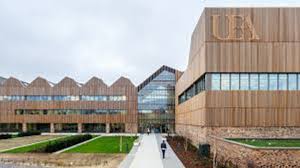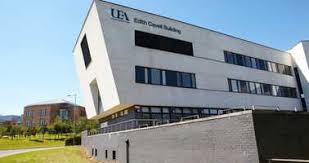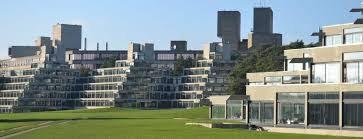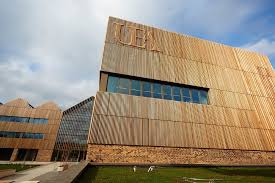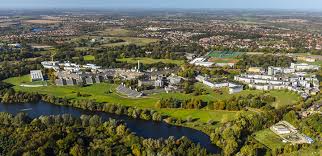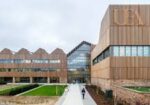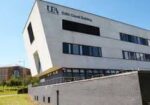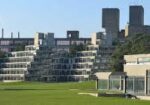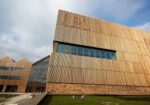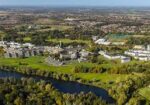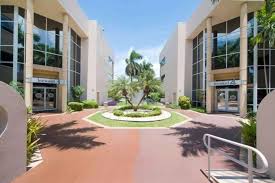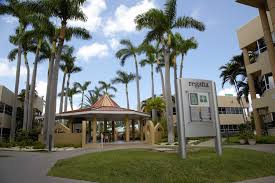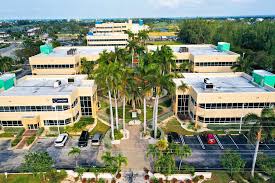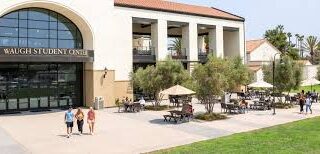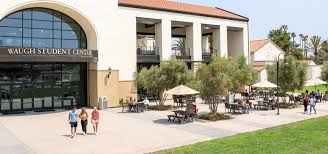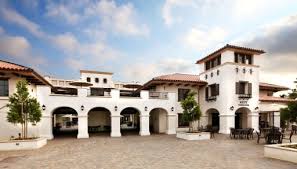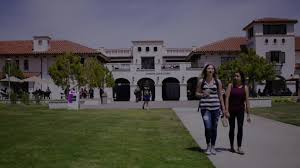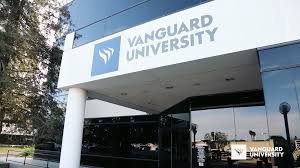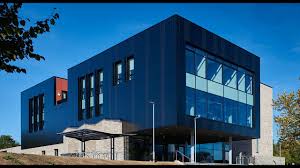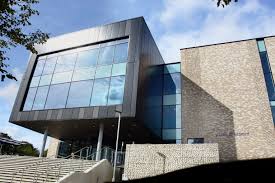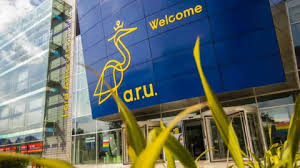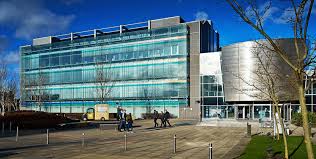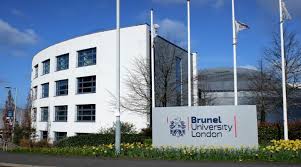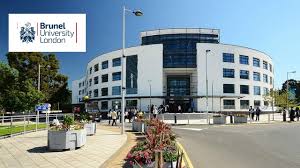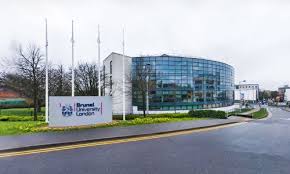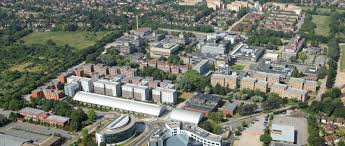Norwich Medical School, University of East Anglia Although officially formed in 1994, the University of East Anglia School of History has strong scholarly foundations, tracing its lineage back to a rich academic heritage drawn from past members of multi-disciplinary schools comprising English and European history specialists.
About Norwich Medical School, University of East Anglia
Now, it encompasses a broad diversity of research clusters ranging from early Middle Ages through to the present day. Thematically, its scholarship includes wide-ranging subjects like landscape history, social and gender history, ecclesiastical studies, medical history, and political and diplomatic history. The School is also home to the Centre of East Anglian Studies, the original regional centre of its kind, committed to investigating the rich heritage of East Anglia.
Norwich Medical School, University of East Anglia – Table of Contents
- About
- Advantages
- Ranking
- Departments And Course Duration
- Facilities And Infrastructure
- Required Documents
- Eligibility Criteria
- Admission Process
- Benefits
- Privileges And Benefits for Indian Students
- FAQ’s
Within medieval history, the School is involved in a number of high-profile research projects. One of the key projects involves editing and contextualising the Plantagenet kings’ charters, including the Magna Carta. This large-scale project involves several strands funded by the Arts and Humanities Research Council (AHRC), the Leverhulme Trust, and the British Academy. Other significant medieval research involves research into the Norman Conquest, medieval kingship, and an authoritative British Academy-funded edition of Anglo-Saxon charters.
Within landscape history, the School enjoys a reputation for being a pioneering centre of expertise using Geographic Information Systems (GIS) for instance to map out Northamptonshire’s landscape. It also embarks upon key studies involving Sutton Hoo, the farm economy of East Anglia 1870–1950, and the full characterization of Suffolk’s coastal marshes. Further study within the department covers park, garden, and medieval castle histories.
Within the discipline of medical history, the School works internationally with, for example, the University of Valencia and the University of Bergen. They study comparative rural health care in Europe between 1800 and 1945. Another related project investigates Concepts of Health and Cleanliness in Medieval England, and in so doing shows the School’s commitment to collaborative and socially engaged research.

Norwich Medical School, University of East Anglia Accreditations, Affiliations, Recognitions
The department of Early Modern history conducts four major research projects. They involve AHRC-funded research on custom and early modern historical perception in England; a JISC-funded project of political discourse before 1800; and a British Academy Virtual Reading Group that enables international scholarly discussion of primary and secondary materials.
The Bacon Papers Project, funded by the British Academy as well, plans to publish Francis Bacon’s works in collected volumes. The School also engages with Spanish social history, Italian gender and religious studies, and popular cultural history.
Regarding modern history, the School is editing an AHRC-funded version of the Letters of Richard Cobden, while exploring themes of free trade, globalization, and 19th- and 20th-century diplomatic and political history. Further projects examine imperial history, the history of sports and pastimes, and social change across Europe.
The School’s European history research emphasizes late 19th and 20th century developments, including a British Academy and AHRC-funded Documentary History of the Soviet Union. Scholars are also involved in studying the Balkans, ethnic cleansing in Central and Southeastern Europe, the history of Austria, and the social history of Bavaria.
Advantages of Studying at Norwich Medical School, University of East Anglia
1. Strong Academic Reputation
UEA consistently ranks among the top universities in the UK, renowned for its commitment to academic excellence and research-led teaching. The Medical School maintains high standards across all programs, ensuring students are prepared to meet the challenges of modern healthcare.
2. Hub of Innovative Research – Norwich Research Park
Located within the vibrant Norwich Research Park, UEA provides students with direct access to one of Europe’s largest collaborative research hubs. This setting fosters interdisciplinary collaboration in cutting-edge fields such as health, food science, biotechnology, and environmental research, offering students the opportunity to engage with leading researchers and contribute to impactful discoveries.
3. Prestigious Faculty of Medicine and Health Sciences
UEA’s Faculty of Medicine and Health Sciences is globally respected for producing highly skilled and workforce-ready healthcare professionals. The curriculum is designed to integrate scientific knowledge with clinical practice, supported by a team of experienced educators and healthcare practitioners.
4. Diverse and Comprehensive Course Offerings
UEA offers a broad spectrum of undergraduate and postgraduate programs in medicine, health sciences, biomedical sciences, and related fields. These programs are regularly updated to reflect advancements in science and practice, catering to a wide range of academic interests and career aspirations.
5. Early and Continuous Clinical Exposure
One of the standout features of Norwich Medical School is its emphasis on early clinical experience. From the very first year, students engage in placements within hospitals, community health settings, and GP practices. This hands-on learning approach helps students build confidence, develop clinical skills early, and understand patient-centered care from the outset.
6. Student-Centered and Supportive Learning Environment
The university adopts a student-focused approach, emphasizing small-group teaching, problem-based learning, and mentorship. Academic specialists offer personalized support, ensuring students receive guidance throughout their educational journey. The supportive culture promotes wellbeing, resilience, and success.
7. Thriving and Inclusive Student Community
UEA is home to a dynamic student community where staff and students work together toward improving lives through healthcare and innovation. The friendly, collaborative atmosphere fosters personal growth and lifelong connections.
8. Vibrant Campus Life
Located on a scenic and self-contained campus, UEA offers a vibrant student experience. There are numerous clubs, societies, cultural events, and recreational opportunities, including a lake, art gallery, and the award-winning UEA Sportspark—one of the largest indoor sports facilities in the UK.
9. Diverse International Student Body
With students from over 100 countries, UEA provides a multicultural learning environment. International students are welcomed with open arms and supported through specialized services, helping them transition smoothly into UK academic and social life.
10. Excellent Location – Historic and Welcoming Norwich
UEA is situated in Norwich, a historic yet modern city known for its unique character, safety, and charm. It boasts rich cultural heritage, vibrant arts, and a variety of cafes, shops, and green spaces—offering an ideal balance between academic focus and city life.
11. Proximity to Leading Hospitals and Clinical Settings
The Norfolk and Norwich University Hospital, a major teaching hospital, is within walking distance from campus, along with access to several other hospitals and health centers in the region. This ensures students receive diverse and practical clinical training throughout their studies.
12. Welcoming and Multicultural Environment
UEA is celebrated for its warm and inclusive culture. Students from all backgrounds are valued, and the university fosters a sense of community where diversity is embraced and cultural exchange is encouraged.
Latest Notifications:
Norwich Medical School, University of East Anglia – Ranking
At Norwich Medical School, we believe in learning through doing. That’s why undergraduate medical students begin clinical placements from the very first year of their program. This early and continuous exposure to real healthcare settings—ranging from hospitals to community clinics—ensures students develop strong clinical skills and confidence from the outset.
Beyond undergraduate study, we offer a diverse portfolio of postgraduate programs, including Clinical Psychology, Physician Associate Studies, and various intercalated degrees and continuing professional development courses, enabling students to broaden their expertise and pursue specialized career pathways.
We Provide Exceptional Support
We are deeply committed to nurturing well-rounded, compassionate healthcare professionals. To support this, we integrate essential soft skills training—such as communication, teamwork, and problem-solving—throughout the curriculum.
Each student is also paired with a dedicated personal adviser, who provides continuous academic guidance, career mentoring, and emotional support throughout their time at the university. University aim is to foster resilience, empathy, and excellence in every student.
We Deliver Groundbreaking Knowledge
Norwich Medical School is at the forefront of innovative medical research. With over £60 million in active research funding, the academics and students are pushing the boundaries of understanding in critical areas such as ageing, public health, cardiometabolic disease, and gut health.
The vibrant research environment not only informs teaching but also offers students opportunities to contribute to meaningful discoveries that impact lives globally.
Departments And Course Duration in Norwich Medical School, University of East Anglia
Bachelor of Medicine, Bachelor of Surgery (MBBS)
Course Duration:
Course Structure Overview:
- Foundations in biomedical sciences, anatomy, physiology, and clinical skills.
- Early and continuous clinical placements in hospitals and GP practices begin from.
- Emphasis on communication, ethics, and professionalism.
- Year 3–4:
- Enhanced clinical experience across different specialties (e.g., surgery, internal medicine, psychiatry, paediatrics, obstetrics, and gynaecology).
- Problem-based learning integrated with hospital and community-based teaching.
- Year 5:
- Advanced clinical apprenticeship preparing students for Foundation Year 1 (FY1).
- Student assistantships and preparation for the UK Foundation Programme.
- Final assessments include clinical examinations and licensing requirements.
Departments at Norwich Medical School:
- Medical Education
- Designs the MBBS curriculum, assessments, and clinical skills training.
- Clinical Psychology & Mental Health
- Offers postgraduate degrees and contributes to psychiatry and mental health modules in MBBS.
- Primary Care & Public Health
- Delivers education in general practice, epidemiology, health promotion, and public health.
- Older People’s Medicine and Complex Health Needs
- Focuses on geriatrics, ageing populations, and chronic disease management.
- Gut Health and Metabolism Research Unit
- Supports research-led teaching in gastroenterology, nutrition, and metabolic health.
- Cardiometabolic Health
- Covers cardiovascular, endocrine, and metabolic systems in clinical practice.
- Biomedical and Clinical Sciences
- Provides a strong foundation in anatomy, physiology, pathology, and pharmacology.
Latest Updates:
Facilities And Infrastructure at Norwich Medical School, University of East Anglia
State-of-the-Art Learning Spaces
-
Bob Champion Research & Education Building:
A modern, purpose-built facility housing clinical teaching rooms, simulation spaces, research labs, and lecture theatres.
-
Anatomy Suite:
A fully equipped dissection and prosection lab that provides hands-on anatomy teaching using cadaveric material, 3D models, and digital learning tools.
-
Clinical Skills Labs:
Realistic hospital-like settings where students practice examination techniques, communication skills, and procedures under supervision.
Technological Integration
-
Simulation Centre:
Includes high-fidelity mannequins and virtual reality stations that allow students to simulate clinical emergencies and routine procedures.
-
Online Learning Platforms:
UEA uses digital platforms like Blackboard and MedSpace to support blended learning, video lectures, and interactive modules.
-
Medical Image Libraries & Databases:
Students have access to a vast range of clinical images, case studies, e-books, and journals via UEA’s library systems.
Library and Study Resources
-
UEA Library (24/7):
A central academic hub open around the clock with thousands of medical and scientific texts, journals, and electronic resources.
-
Quiet Study Zones & Group Pods:
Dedicated zones for silent study, group collaboration, and academic discussions.
Research Facilities
-
Norwich Research Park:
One of Europe’s largest single-site concentrations of research in health, food, and environmental sciences. It brings together UEA, the Norfolk and Norwich University Hospital (NNUH), and partner institutes.
-
Research Labs:
Equipped for advanced research in ageing, cardiometabolic health, gut health, public health, and medical microbiology.
Clinical and Hospital Connections
-
Norfolk and Norwich University Hospital (NNUH):
A major teaching hospital just minutes from campus, where students receive regular clinical placements and training.
-
Local GP Practices & Community Clinics:
Integrated into the curriculum from Year 1 to provide hands-on, patient-facing experiences.
Campus Accommodation & Amenities
-
On-Campus Residences:
Well-equipped, affordable housing options with Wi-Fi, common kitchens, and access to green spaces.
-
Student Support Services:
Includes counselling, academic advising, health services, and career support.
-
Sports & Recreation:
UEA Sportspark is one of the largest indoor sports facilities in Britain, offering gyms, pools, athletics tracks, and team sports facilities.
Official site For Norwich Medical School, University of East Anglia: Click Here
Required Documents For Admission in Norwich Medical School, University of East Anglia
- Original Birth Certificate
- Copy of a valid passport
- NEET Scorecard
- CV (if required)
- Statement of Purpose
- Reference letter(s)
- Certificate of English proficiency test – IELTS/TOEFL/C1 Advanced
- Financial Documents as Proof of financial ability
- Academic transcription or proof of your previous academic
- Transfer certificate
- Photocopy of IELTS/UKCAT/BMAT scores
- A personal statement that illustrates why you’re coming to the UK.
Eligibility Criteria For Admission in Norwich Medical School, University of East Anglia
- Pass 10+2 exam with PCB as main subject.
- Score at least 80-90% of marks in the 10+2 exam.
- Qualify NEET UG Exam.
- Clear UCAT & BMAT Medical Entrance Exam in the UK.
- Submit a certificate of IELTS or TOEFL.
- Migration certificate.
- Valid passport.
- Passports size photographs.
- Candidate VISA.
Admission Process For Norwich Medical School, University of East Anglia
Apply Online
Fill out the online application form on the university’s website.
Send Printed Documents
Print, sign, and send the completed application along with required documents to the university.
Email Scanned Copies
Scan and email all necessary documents with the subject line “Application for Admission.”
Meet the Deadline
Make sure all documents are submitted before the final application deadline.
Wait for the Decision
The university reviews your application and sends an offer or rejection letter.
Pay the Fees
If accepted, pay the initial fees to receive your official acceptance letter.
Legalize Your Documents
Get your academic documents translated, attested, and apostilled if required.
Apply for Visa
Apply for a student visa with the support of the university’s official invitation letter.
Get More Details About The Colleges in UK: Click Here
Benefits of Studying at Norwich Medical School, University of East Anglia
- Early Clinical Exposure
Students start clinical placements from the first year, allowing early hands-on experience in real healthcare settings including hospitals, clinics, and GP practices. - Cutting-Edge Facilities
Access to advanced resources such as the Bob Champion Research and Education Building, a modern anatomy suite, and high-fidelity simulation centres designed for immersive clinical training. - Research-Led Teaching
With over £60 million in ongoing research, UEA is at the forefront of discoveries in public health, ageing, gut health, and cardiometabolic conditions, enriching your learning experience. - Student Support
Strong personal and academic support systems are in place, including personal advisers, study skills development, and wellness resources for both academic and emotional support. - Diverse and Inclusive Community
A vibrant international student body and a supportive learning environment that promotes diversity, inclusion, and collaboration. - Interdisciplinary Learning
Opportunities to engage in intercalated degrees and postgraduate studies such as Clinical Psychology and Physician Associate programs, giving students more career flexibility and depth. - Renowned Academic Reputation
Norwich Medical School is part of a top-ranked UK university, well-known for its academic excellence and high student satisfaction. - Career Preparation
The curriculum is tailored to build critical skills in communication, teamwork, clinical reasoning, and problem-solving — all essential for a successful medical career. - Prime Location
Located in the beautiful and historic city of Norwich, with proximity to Norfolk and Norwich University Hospital, ensuring convenient access to clinical training sites.
Privileges And Benefits for Indian Students in Norwich Medical School, University of East Anglia
Global Recognition of Degree
The MBBS (Bachelor of Medicine, Bachelor of Surgery) degree from UEA is internationally recognized, including by the National Medical Commission (NMC) in India, allowing Indian graduates to pursue licensing exams and practice in India or abroad.
Multicultural and Inclusive Campus
UEA welcomes students from over 100 countries, creating a diverse and inclusive environment where Indian students feel welcomed, respected, and supported.
International Student Support Services
Dedicated services are available for Indian students, including visa assistance, academic support, cultural adjustment guidance, and one-on-one consultations with international advisers.
Indian Student Society & Cultural Events
Indian students can connect through the UEA Indian Society, which celebrates Indian festivals like Diwali, Holi, and Navratri, helping maintain a cultural connection while studying abroad.
Scholarships & Financial Aid Opportunities
UEA offers various scholarships for international students, including partial tuition waivers and merit-based awards, which Indian students can apply for to ease financial burden.
English Language Support
Tailored academic English and communication support is provided through language workshops, writing sessions, and tutoring — especially beneficial for students adjusting to the UK academic system.
Clinical Placement Opportunities in Major Hospitals
Indian students gain clinical experience in NHS hospitals like Norfolk and Norwich University Hospital, giving them exposure to one of the world’s most respected healthcare systems.
Career Support & Post-Graduation Pathways
UEA offers excellent career services to help Indian students with internship opportunities, guidance on the UK Foundation Programme, and preparation for exams such as PLAB, USMLE, or FMGE.
Safe and Student-Friendly City
Norwich is a peaceful, culturally rich, and safe city, ideal for international students. The low cost of living compared to larger UK cities makes it a budget-friendly option.
FAQ’s
Is the MBBS degree from UEA recognized in India?
Yes, UEA’s MBBS degree is internationally recognized and accepted by the National Medical Commission (NMC) in India, subject to qualifying licensing exams like FMGE.
When do clinical placements begin for MBBS students?
Clinical placements begin in the first year, giving students early hands-on experience in NHS hospitals and GP surgeries.
Does UEA provide hostel or accommodation facilities for international students?
Yes, UEA offers on-campus accommodation with a variety of housing options, including en-suite and shared facilities. Accommodation is guaranteed for international students in their first year.
Is there an Indian student community at UEA?
Yes, UEA has a vibrant Indian Student Society that organizes cultural events, celebrations, and support networks for Indian students.
What are the English language requirements for Indian students?
Indian students must usually have an IELTS score of 7.5 overall, with at least 7.0 in each component (listening, reading, writing, speaking).
Also Check:
